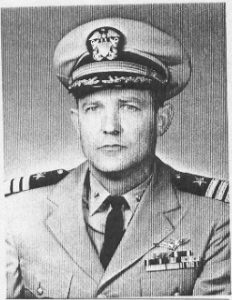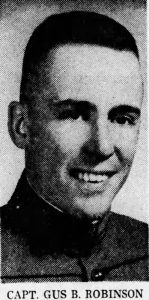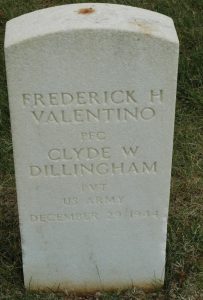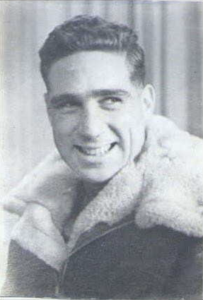Wayne Kenneth Miller, age 40, from Riverside County Riverside, California .
Service era: World War II
Date of death: Sunday, December 31, 1944
Death details: On December 13, 1944, Japanese forces in the Philippines began the transfer of 1,621 Allied prisoners of war (POWs) to Japan. The POWs were to make the journey aboard transport ships whose harsh conditions and extreme overcrowding led survivors to refer to them as “Hell Ships.” The ships also lacked markings that would distinguish them from any other military target, causing some of them to be attacked by Allied forces who could not identify them as POW transports. On December 14, 1944, Allied aircraft attacked the first ship, the Oryoku Maru, in Subic Bay in the Philippines, killing many Allied POWs who became lost in the water, sank with the ship, or were washed ashore. Survivors of the bombing were put aboard two other ships, the Enoura Maru and the Brazil Maru, to continue on to Japan. During the journey, while anchored in Takao Harbor, Formosa (present-day Taiwan), the Enoura Maru was attacked by Allied aircraft from the USS Hornet (CV-8), killing Allied POWs who were lost in the water, on board the ship, or on the nearby shore. Survivors of the Enoura Maru bombing were loaded onto the Brazil Maru, and reached Japan on January 30, 1945. As a result of these incidents, Allied POWs were lost in the Philippines, at sea between the Philippines and Taiwan, while anchored in Taiwan, at sea between Taiwan and Japan, and in Japan. The attacks on these POW transports ultimately resulted in a series of death notifications from the Japanese government through the International Red Cross (IRC), and some casualties were given up to five different dates of death at various locations during the transfer. Witness accounts from surviving POWs offer detailed information for a handful of casualties, but the specific dates of loss and/or last-known locations for many of these POWs are based on the most recent reported date of death. Sergeant Major Wayne K. Miller entered the U.S. Marine Corps from California and served with Company E, 2nd Battalion, 4th Marine Regiment. Captured by the Japanese in the spring of 1942 after the surrender of U.S. forces on Corregidor Island in the Philippines, and incarcerated at Cabanatuan POW camp in Nueva Ecija Province, SGM Miller is believed to have died aboard the transport ship Enoura Maru en route to Takao Harbor on December 31, 1944. He has not been associated with any remains recovered from the area after the war and is still unaccounted-for. Today, Sergeant Major Miller is memorialized on the Walls of the Missing at the Manila American Cemetery and Memorial in the Republic of the Philippines.
Source: National Archives, Defense POW/MIA Accounting Agency



